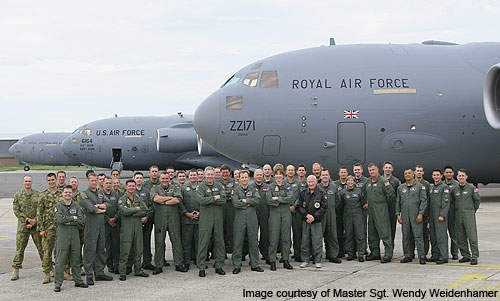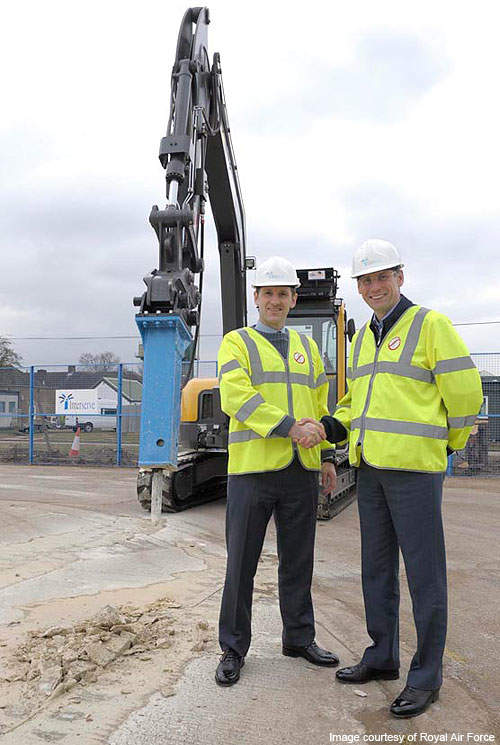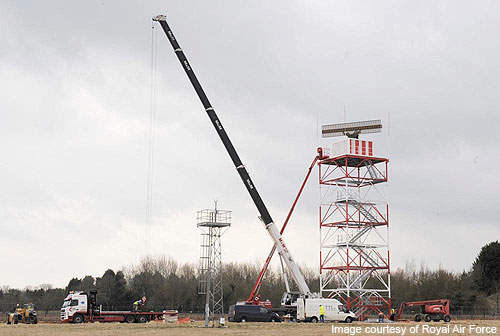RAF Brize Norton is the Royal Air Force’s (RAF) largest and busiest air station. It is located in Oxfordshire, about 65 miles from London. The base is home to air-to-air refuelling and strategic air transport forces. It can handle large passenger and cargo aircraft and is the main operating base of the RAF. The station also has the leading parachute training school RAF unit.
RAF Brize Norton serves as the main airport for deployment of UK troops in exercises and operations across the globe. The base operates the C-17 Globemaster, Tristar and VC10 aircraft.
The Royal Air Force Board of the Defence Council decided to close the air transport operations and air-to-air refuelling assets at RAF Lyneham in Wiltshire. They will be consolidated with Brize Norton by 2012.
RAF Lyneham has been in active service since March 1943. The decision to close the base was taken after a study in 2003. The consolidation is expected to increase the efficiency of Brize Norton. The base is undergoing a major infrastructure development project called Future Brize to accommodate the consolidation.
Brize Norton base history
Brize Norton was opened as a training base in 1937. Under an agreement between the UK and US Governments, the US Air Force (USAF) Strategic Air Command (SAC) was set-up in the UK in the 1950s. SAC bombers were housed at RAF Sculthorpe, RAF Marham and RAF Lakenheath. The bases were, however, considered vulnerable which led to the shifting of the bombers to RAF Fairford, RAF Upper Heyford, RAF Greenham Common and Brize Norton.
In June 1950, Brize Norton came under the control of RAF Bomber Command. The USAF SAC arrived at the base in 1951. The USAF made huge investments in the base to construct taxiways, dispersals, weapon handling, accommodation facilities and runway expansions from 6,000ft to 9,000ft. Brize Norton was formally handed over to the bombers in April 1951. Several aircraft including B-47E Stratojet bombers, KC-97G boom-equipped tankers, KC-97, KC-135, B-58 and B-52B bombers were deployed at the base from 1953 to 1957.
In April 1965 the base came under the control of the RAF and became a transport command base. The Vickers VC10 became operational at the base in 1966 and its variants were used for refuelling. In 1969, a cantilever-roofed, purpose-built hangar measuring a quarter of a mile was built. Known as Base Hangar, it was used for servicing the VC10 aircraft fleet. The other aircraft that operated at the base include the Short Belfast C1 and the Avro Vulcan.
In 2005, new equipment and lighting were installed and the runway of the base was resurfaced to meet the standards of category II operations. Brize Norton became the military emergency diversion airfield for the southern UK with the installation of rotary hydraulic arrestor gear.
Design and construction
The £340m Future Brize project will accommodate the Hercules aircraft fleet and other assets from RAF Lyneham. The programme will also help increase passenger and freight handling capacities at the base. AMTEC and Hitachi Consulting were involved in the revised programme to save £23m a year.
The aircraft’s stationing capacity will also increase from 30 to about 70. Major infrastructure renovations include engineering, housing and IT and support facilities. The base will also enable aerial refuelling with the Airbus A400M and Airbus A330 MRTT. Other works at the base include air terminal roof recovering, base hangar refurbishment works and the construction of an aircraft servicing platform surface water attenuation facility.
In March 2007, PriDE, a joint venture company of Southern Electric Contracting and Interserve Defence, was awarded a £40m contract to design and build the aircraft parking stands to accommodate the future aircraft fleets. Babcock, under a subcontract, supplies equipment for construction of infrastructure such as support building, two-bay hangar and associated workshops, training building with simulator and four-floor office accommodation.
Garrison facilities
RAF Brize Norton employs about 3,900 service personnel and 600 civilians. The flying squadrons include: 99 Squadron for Boeing C-17 Globemaster III, 101 Squadron for Vickers VC10, 216 Squadron for Lockheed L-1011 TriStar. The 501 Squadron at the base is a Royal Auxiliary Air Force and part of the RAF Reserves.
The lodger units at the base include joint air delivery test and evaluation unit, No.1 Parachute Training School RAF and RAF Police. RAF Brize Norton Flying Club provides training with two Piper Warriors. It is also home to the Department of Community Mental Health. The base also administers the Defence Movements School and 90 Signals Unit.
The base offers flexible AAR and AT tasks. Under the AT missions, the base provides airlift to the UK operational bases in Afghanistan, Cyprus and Gulf. The AAR missions include support to the UK Air Defence forces and AAR training to the UK and Nato air forces and aircraft deployment for exercises throughout Europe.
Air facilities
The base has a 10,007ft asphalt surface runway 08/26 and the air traffic is controlled by two radars. In March 2010, one of the radars, the secondary surveillance radar, was moved from the northern side to the southern side of the field to accommodate the houses being constructed at the base.
Other facilities
A new officers’ mess SLAM accommodation was opened at the base in June 2010. A new PE’D flight fitness centre was opened in July 2010. In the same month, the Serco Group was awarded a £36m, six-year contract for providing support services at the base.
Future developments
The base will have 744 junior ranks rooms, 64 officers and 50 senior non-commissioned officer rooms under the single living accommodation modernisation of the Future Brize programme. The 600 service families accommodation homes at the base are planned to be replaced with 800 new houses. Future plans also include refurbishment of the other SFA houses.
Construction of a £9.1m C-130J training mission rehearsal facility at RAF Brize Norton began in March 2010 and is expected to be complete by April 2011.






